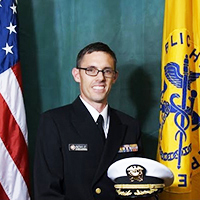We are working across the Indian health system to promote appropriate and effective pain management, reduce overdose deaths from heroin and prescription opioid misuse, and improve access to culturally appropriate treatment. An example of a community-based model is the Salt River Pima-Maricopa Indian Community, who makes opioid safety a priority by increasing access to naloxone throughout the community, monitoring opioid use with a multi-disciplinary committee and educating community members about overdose prevention during local events. Providers and community employees are working with tribal leadership on many fronts to get naloxone in the hands of community members and to stomp out opioid overdoses.
In January 2020, the community’s StrongLife Wellness Program held a health screening and education event which included an intranasal naloxone training session. Clinic staff successfully trained more than 450 adults and children on the proper use of naloxone and dispensed over 280 free intranasal naloxone Kits. A brief video on how to use intranasal naloxone was shown and participants were encouraged to open their naloxone Kit and become familiar with the device as the video proceeded. Following the video, the trainers provided an in-person naloxone demonstration, answered questions, and quizzed participants on what they learned. This informal quiz session allowed participants to “teach-back” key principles of appropriate naloxone use.
Other efforts to increase naloxone access through the community include:
- Mandatory naloxone co-prescribing through a collaborative practice agreement for all opioid recipients since 2016;
- Tribal council engagement with formal intranasal naloxone use demonstrations;
- Community engagement initiatives such as seminars, workshops, and health fairs focusing on naloxone demonstrations and dispensing of naloxone Kits; and
- Spearheading the local "Not One More" campaign which provides education and training on naloxone to community members with the platform of, “We refuse to lose one more community member to overdose.” This campaign utilizes guidelines provided by the IHS National Committee on Heroin Opioids and Pain Efforts, known as the HOPE Committee, and the Pharmacist Opioid Overdose Response Training Initiative.
For additional information regarding expanding naloxone access in your area, please contact your IHS Area naloxone mentor and visit the HOPE Committee’s opioids website where the Naloxone Toolkit is available.
Related Content
IHS announces requirements to increase access to Medication Assisted Treatment for Opioid Use Disorder
IHS and AAP release clinical recommendations to improve care of American Indian, Alaska Native women and infants impacted by prenatal opioid exposure
Co-prescribing Naloxone with Opioids May Help Curb the Devastating Risks of Opioid Misuse



